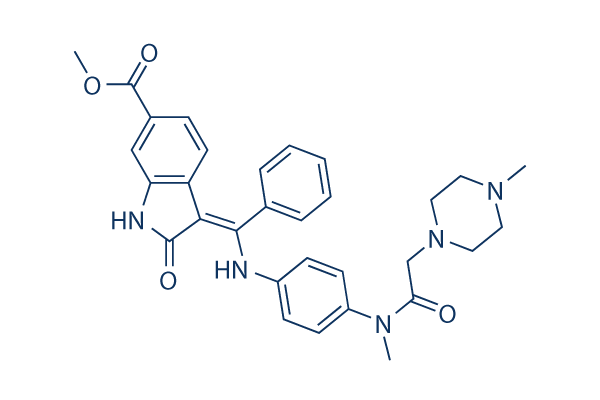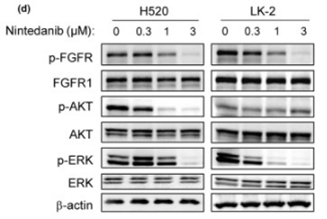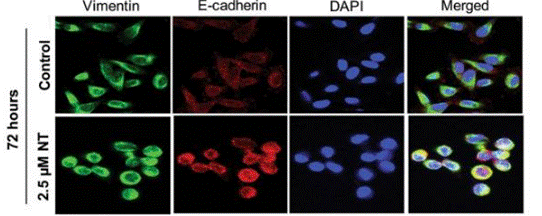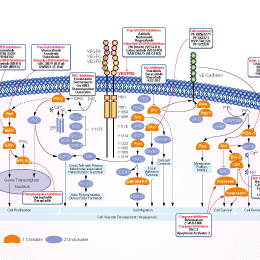
- Bioactive Compounds
- By Signaling Pathways
- PI3K/Akt/mTOR
- Epigenetics
- Methylation
- Immunology & Inflammation
- Protein Tyrosine Kinase
- Angiogenesis
- Apoptosis
- Autophagy
- ER stress & UPR
- JAK/STAT
- MAPK
- Cytoskeletal Signaling
- Cell Cycle
- TGF-beta/Smad
- DNA Damage/DNA Repair
- Compound Libraries
- Popular Compound Libraries
- Customize Library
- Clinical and FDA-approved Related
- Bioactive Compound Libraries
- Inhibitor Related
- Natural Product Related
- Metabolism Related
- Cell Death Related
- By Signaling Pathway
- By Disease
- Anti-infection and Antiviral Related
- Neuronal and Immunology Related
- Fragment and Covalent Related
- FDA-approved Drug Library
- FDA-approved & Passed Phase I Drug Library
- Preclinical/Clinical Compound Library
- Bioactive Compound Library-I
- Bioactive Compound Library-Ⅱ
- Kinase Inhibitor Library
- Express-Pick Library
- Natural Product Library
- Human Endogenous Metabolite Compound Library
- Alkaloid Compound LibraryNew
- Angiogenesis Related compound Library
- Anti-Aging Compound Library
- Anti-alzheimer Disease Compound Library
- Antibiotics compound Library
- Anti-cancer Compound Library
- Anti-cancer Compound Library-Ⅱ
- Anti-cancer Metabolism Compound Library
- Anti-Cardiovascular Disease Compound Library
- Anti-diabetic Compound Library
- Anti-infection Compound Library
- Antioxidant Compound Library
- Anti-parasitic Compound Library
- Antiviral Compound Library
- Apoptosis Compound Library
- Autophagy Compound Library
- Calcium Channel Blocker LibraryNew
- Cambridge Cancer Compound Library
- Carbohydrate Metabolism Compound LibraryNew
- Cell Cycle compound library
- CNS-Penetrant Compound Library
- Covalent Inhibitor Library
- Cytokine Inhibitor LibraryNew
- Cytoskeletal Signaling Pathway Compound Library
- DNA Damage/DNA Repair compound Library
- Drug-like Compound Library
- Endoplasmic Reticulum Stress Compound Library
- Epigenetics Compound Library
- Exosome Secretion Related Compound LibraryNew
- FDA-approved Anticancer Drug LibraryNew
- Ferroptosis Compound Library
- Flavonoid Compound Library
- Fragment Library
- Glutamine Metabolism Compound Library
- Glycolysis Compound Library
- GPCR Compound Library
- Gut Microbial Metabolite Library
- HIF-1 Signaling Pathway Compound Library
- Highly Selective Inhibitor Library
- Histone modification compound library
- HTS Library for Drug Discovery
- Human Hormone Related Compound LibraryNew
- Human Transcription Factor Compound LibraryNew
- Immunology/Inflammation Compound Library
- Inhibitor Library
- Ion Channel Ligand Library
- JAK/STAT compound library
- Lipid Metabolism Compound LibraryNew
- Macrocyclic Compound Library
- MAPK Inhibitor Library
- Medicine Food Homology Compound Library
- Metabolism Compound Library
- Methylation Compound Library
- Mouse Metabolite Compound LibraryNew
- Natural Organic Compound Library
- Neuronal Signaling Compound Library
- NF-κB Signaling Compound Library
- Nucleoside Analogue Library
- Obesity Compound Library
- Oxidative Stress Compound LibraryNew
- Plant Extract Library
- Phenotypic Screening Library
- PI3K/Akt Inhibitor Library
- Protease Inhibitor Library
- Protein-protein Interaction Inhibitor Library
- Pyroptosis Compound Library
- Small Molecule Immuno-Oncology Compound Library
- Mitochondria-Targeted Compound LibraryNew
- Stem Cell Differentiation Compound LibraryNew
- Stem Cell Signaling Compound Library
- Natural Phenol Compound LibraryNew
- Natural Terpenoid Compound LibraryNew
- TGF-beta/Smad compound library
- Traditional Chinese Medicine Library
- Tyrosine Kinase Inhibitor Library
- Ubiquitination Compound Library
-
Cherry Picking
You can personalize your library with chemicals from within Selleck's inventory. Build the right library for your research endeavors by choosing from compounds in all of our available libraries.
Please contact us at [email protected] to customize your library.
You could select:
- Antibodies
- Bioreagents
- qPCR
- 2x SYBR Green qPCR Master Mix
- 2x SYBR Green qPCR Master Mix(Low ROX)
- 2x SYBR Green qPCR Master Mix(High ROX)
- Protein Assay
- Protein A/G Magnetic Beads for IP
- Anti-Flag magnetic beads
- Anti-Flag Affinity Gel
- Anti-Myc magnetic beads
- Anti-HA magnetic beads
- Magnetic Separator
- Poly DYKDDDDK Tag Peptide lyophilized powder
- Protease Inhibitor Cocktail
- Protease Inhibitor Cocktail (EDTA-Free, 100X in DMSO)
- Phosphatase Inhibitor Cocktail (2 Tubes, 100X)
- Cell Biology
- Cell Counting Kit-8 (CCK-8)
- Animal Experiment
- Mouse Direct PCR Kit (For Genotyping)
- New Products
- Contact Us
Nintedanib
Synonyms: BIBF 1120, Intedanib
Nintedanib is a potent triple angiokinase inhibitor for VEGFR1/2/3, FGFR1/2/3 and PDGFRα/β with IC50 of 34 nM/13 nM/13 nM, 69 nM/37 nM/108 nM and 59 nM/65 nM in cell-free assays. Phase 3.

Nintedanib Chemical Structure
CAS No. 656247-17-5
Purity & Quality Control
Batch:
Purity:
99.98%
99.98
Nintedanib Related Products
Signaling Pathway
Cell Data
| Cell Lines | Assay Type | Concentration | Incubation Time | Formulation | Activity Description | PMID |
|---|---|---|---|---|---|---|
| SKOV3 | Function Assay | 5 µM | 24 h | DMSO | induces a significant increase in the promoter activities of E-cad, CDH1, and CDH3 | 26061747 |
| A549 | Function Assay | 2/5 μM | 24 h | DMSO | has a general EMT reversal effect | 26061747 |
| T24 | Function Assay | 2/5 μM | 24 h | DMSO | has a general EMT reversal effect | 26061747 |
| Mia-Paca2 | Function Assay | 2/5 μM | 24 h | DMSO | has a general EMT reversal effect | 26061747 |
| A549 | Function Assay | 0.01–5 μM | 24 h | DMSO | induces SFTPD mRNA expression dose dependently | 25843005 |
| A549 | Function Assay | 0.01–5 μM | 72 h | DMSO | enhances SP-D protein expression in a dose-dependent manner at concentrations of up to 5 μM | 25843005 |
| A549 | Function Assay | 5 μM | 0-1 h | DMSO | increases AP-1 activation after 30 min | 25843005 |
| Hep3B | Cell Viability Assay | 0-20 μM | 48 h | decreases cell viability dose dependently | 24657398 | |
| HepG2 | Cell Viability Assay | 0-20 μM | 48 h | decreases cell viability dose dependently | 24657398 | |
| PLC5 | Cell Viability Assay | 0-20 μM | 48 h | decreases cell viability dose dependently | 24657398 | |
| HuH7 | Cell Viability Assay | 0-20 μM | 48 h | decreases cell viability dose dependently | 24657398 | |
| SK-Hep1 | Cell Viability Assay | 0-20 μM | 48 h | decreases cell viability dose dependently | 24657398 | |
| Hep3B | Apoptosis Assay | 0-20 μM | 48 h | induces cell apoptosis dose dependently | 24657398 | |
| HepG2 | Apoptosis Assay | 0-20 μM | 48 h | induces cell apoptosis dose dependently | 24657398 | |
| PLC5 | Apoptosis Assay | 0-20 μM | 48 h | induces cell apoptosis dose dependently | 24657398 | |
| HuH7 | Apoptosis Assay | 0-20 μM | 48 h | induces cell apoptosis dose dependently | 24657398 | |
| SK-Hep1 | Apoptosis Assay | 0-20 μM | 48 h | induces cell apoptosis dose dependently | 24657398 | |
| H1703 | Growth Inhibition Assay | IC50=0.05 μM | 23729403 | |||
| Sf9 | Function assay | 20 mins | Inhibition of mouse GST-fused VEGFR2 expressed in Sf9 insect cells after 20 mins by scintillation counting, IC50 = 0.013 μM. | 18559524 | ||
| Sf9 | Function assay | 20 mins | Inhibition of human GST-fused VEGFR2 expressed in Sf9 insect cells after 20 mins by scintillation counting, IC50 = 0.021 μM. | 18559524 | ||
| NIH3T3 | Function assay | 50 nM | 1 hr | Inhibition of VEGFR2 transfected in mouse NIH3T3 cells at 50 nM incubated for 1 hr measured after 32 hrs washout followed by VEGF stimulation for 10 mins by Western blotting | 18559524 | |
| HT-29 | Antiproliferative assay | 72 hrs | Antiproliferative activity against human HT-29 cells after 72 hrs by MTT assay, IC50 = 4.9 μM. | 28190652 | ||
| SKOV3 | Antiproliferative assay | 72 hrs | Antiproliferative activity against human SKOV3 cells after 72 hrs by MTT assay, IC50 = 28.76 μM. | 28190652 | ||
| BL21 (DE3) | Function assay | 30 mins | Inhibition of His6-tagged MELK catalytic domain (1 to 340 residues) (unknown origin) expressed in Escherichia coli BL21 (DE3) cells using Bcl-GL as substrate measured after 30 mins in presence of [gamma32P]ATP by liquid scintillation counting method, Ki = 0.0056 μM. | 28351607 | ||
| BL21 (DE3) | Function assay | 30 mins | Inhibition of His6-tagged MELK catalytic domain (1 to 340 residues) (unknown origin) expressed in Escherichia coli BL21 (DE3) cells using Bcl-GL as substrate measured after 30 mins in presence of [gamma32P]ATP by liquid scintillation counting method, IC50 = 0.043 μM. | 28351607 | ||
| HT-29 | Antiproliferative assay | 72 hrs | Antiproliferative activity against human HT-29 cells after 72 hrs by MTT assay, IC50 = 0.83 μM. | 28826084 | ||
| MCF7 | Antiproliferative assay | 72 hrs | Antiproliferative activity against human MCF7 cells after 72 hrs by MTT assay, IC50 = 8.28 μM. | 28826084 | ||
| A549 | Antiproliferative assay | 72 hrs | Antiproliferative activity against human A549 cells after 72 hrs by MTT assay, IC50 = 22.62 μM. | 28826084 | ||
| NIH/3T3 | Function assay | 42 hrs | Inhibition of PDGFR in mouse NIH/3T3 cells assessed as reduction in recombinant human PDGF-BB-induced cell proliferation after 42 hrs by cell titer 96 aqueous one solution based assay, IC50 = 0.085 μM. | 29152045 | ||
| Sf9 | Function assay | Inhibition of human VEGFR2 expressed in Sf9 cells, IC50 = 0.005 μM. | 19522465 | |||
| NIH3T3 | Function assay | 1 hr | Inhibition of VEGF-stimulated human VEGFR2 phosphorylation expressed in mouse NIH3T3 cells pretreated for 1 hr measured 32 hrs after drug dose by immunoprecipitation based pulse-chase experiment | 19522465 | ||
| BRP | Apoptosis assay | Induction of apoptosis in BRP cells assessed as caspase-3 cleavage | 19522465 | |||
| BRP | Antiangiogenic assay | Antiangiogenic activity BRP cells assessed as inhibition of cell proliferation by [3H]thymidine incorporation assay | 19522465 | |||
| TC32 | qHTS assay | qHTS of pediatric cancer cell lines to identify multiple opportunities for drug repurposing: Primary screen for TC32 cells | 29435139 | |||
| A673 | qHTS assay | qHTS of pediatric cancer cell lines to identify multiple opportunities for drug repurposing: Primary screen for A673 cells | 29435139 | |||
| DAOY | qHTS assay | qHTS of pediatric cancer cell lines to identify multiple opportunities for drug repurposing: Primary screen for DAOY cells | 29435139 | |||
| Saos-2 | qHTS assay | qHTS of pediatric cancer cell lines to identify multiple opportunities for drug repurposing: Primary screen for Saos-2 cells | 29435139 | |||
| BT-37 | qHTS assay | qHTS of pediatric cancer cell lines to identify multiple opportunities for drug repurposing: Primary screen for BT-37 cells | 29435139 | |||
| SK-N-SH | qHTS assay | qHTS of pediatric cancer cell lines to identify multiple opportunities for drug repurposing: Primary screen for SK-N-SH cells | 29435139 | |||
| NB1643 | qHTS assay | qHTS of pediatric cancer cell lines to identify multiple opportunities for drug repurposing: Primary screen for NB1643 cells | 29435139 | |||
| OHS-50 | qHTS assay | qHTS of pediatric cancer cell lines to identify multiple opportunities for drug repurposing: Primary screen for OHS-50 cells | 29435139 | |||
| LAN-5 | qHTS assay | qHTS of pediatric cancer cell lines to identify multiple opportunities for drug repurposing: Confirmatory screen for LAN-5 cells | 29435139 | |||
| DAOY | qHTS assay | qHTS of pediatric cancer cell lines to identify multiple opportunities for drug repurposing: Confirmatory screen for DAOY cells | 29435139 | |||
| Rh41 | qHTS assay | qHTS of pediatric cancer cell lines to identify multiple opportunities for drug repurposing: Primary screen for Rh41 cells | 29435139 | |||
| MG 63 (6-TG R) | qHTS assay | qHTS of pediatric cancer cell lines to identify multiple opportunities for drug repurposing: Confirmatory screen for MG 63 (6-TG R) cells | 29435139 | |||
| Rh30 | qHTS assay | qHTS of pediatric cancer cell lines to identify multiple opportunities for drug repurposing: Confirmatory screen for Rh30 cells | 29435139 | |||
| U-2 OS | qHTS assay | qHTS of pediatric cancer cell lines to identify multiple opportunities for drug repurposing: Confirmatory screen for U-2 OS cells | 29435139 | |||
| OHS-50 | qHTS assay | qHTS of pediatric cancer cell lines to identify multiple opportunities for drug repurposing: Confirmatory screen for OHS-50 cells | 29435139 | |||
| Rh41 | qHTS assay | qHTS of pediatric cancer cell lines to identify multiple opportunities for drug repurposing: Confirmatory screen for Rh41 cells | 29435139 | |||
| SJ-GBM2 | qHTS assay | qHTS of pediatric cancer cell lines to identify multiple opportunities for drug repurposing: Primary screen for SJ-GBM2 cells | 29435139 | |||
| NB-EBc1 | qHTS assay | qHTS of pediatric cancer cell lines to identify multiple opportunities for drug repurposing: Primary screen for NB-EBc1 cells | 29435139 | |||
| LAN-5 | qHTS assay | qHTS of pediatric cancer cell lines to identify multiple opportunities for drug repurposing: Primary screen for LAN-5 cells | 29435139 | |||
| NB1643 | qHTS assay | qHTS of pediatric cancer cell lines to identify multiple opportunities for drug repurposing: Confirmatory screen for NB1643 cells | 29435139 | |||
| SK-N-MC | qHTS assay | qHTS of pediatric cancer cell lines to identify multiple opportunities for drug repurposing: Confirmatory screen for SK-N-MC cells | 29435139 | |||
| TC32 | qHTS assay | qHTS of pediatric cancer cell lines to identify multiple opportunities for drug repurposing: Confirmatory screen for TC32 cells | 29435139 | |||
| Rh18 | qHTS assay | qHTS of pediatric cancer cell lines to identify multiple opportunities for drug repurposing: Confirmatory screen for Rh18 cells | 29435139 | |||
| Click to View More Cell Line Experimental Data | ||||||
Biological Activity
| Description | Nintedanib is a potent triple angiokinase inhibitor for VEGFR1/2/3, FGFR1/2/3 and PDGFRα/β with IC50 of 34 nM/13 nM/13 nM, 69 nM/37 nM/108 nM and 59 nM/65 nM in cell-free assays. Phase 3. | |||||||||||
|---|---|---|---|---|---|---|---|---|---|---|---|---|
| Targets |
|
| In vitro | ||||
| In vitro | BIBF1120 inhibits PDGFR kinase activity of PDGFR alpha and PDGFR beta types with IC50 values of 59 nM and 65 nM, respectively. In addition, BIBF1120 suppresses the FGFR subtypes with IC50 of 60 nM, 37 nM and 108 nM for FGFR1, FGFR2, and FGFR3, respectively. BIBF1120 binds to the ATP-binding site in the cleft between the amino and carboxy terminal lobes of the kinase domain. The indolinone scaffold forms two hydrogen bonds with the backbone nitrogen of Cys919 and the backbone carbonyl oxygen of Glu917 in the hinge region. BIBF 1120 inhibits proliferation of PDGF-BB stimulated BRPs with EC50 of 79 nM in cell assays. BIBF1120 at concentrations as low as 100 nM blocks activation of MAPK after stimulation with 5% serum plus PDGF-BB. In cultures of human vascular smooth muscle cells (HUASMC), BIBF1120 prevents PDGF-BB stimulated proliferation with an EC50 of 69 nM. [1] |
|||
|---|---|---|---|---|
| Kinase Assay | VEGFR2 Kinase Assay | |||
| The cytoplasmic tyrosine kinase domain of VEGFR2 (residues 797-1355 according to sequence deposited in databank SWISS-PROT P35968) is cloned into pFastBac fused to GST and extracted. Enzyme activity is assayed in the presence or absence of serial dilutions of BIBF1120 performed in 25% DMSO. Each microtiter plate contains internal controls such as blank, maximum reaction, and historical reference compound. All incubations are conducted at room temperature on a rotation shaker. 10 μL of each BIBF1120 dilution is added to 10 μL of diluted kinase (0.8 μg/mL VEGFR2, 10 mM Tris pH 7.5, 2 mM EDTA, and 2 mg/mL BSA) and preincubated for 1 hour. The reaction is started by addition of 30 μL of substrate mix containing 62.4 mM Tris pH 7.5, 2.7 mM DTT, 5.3 mM MnCl2, 13.3 mM Mg-acetate, 0.42 mM ATP, 0.83 mg/mL Poly-Glu-Tyr(4:1), and 1.7 μg/mL Poly-Glu-Tyr(4:1)-biotin and incubated for 1 hour. The reaction is stopped by addition of 50 μL of 250 mM EDTA, 20 mM HEPES, pH 7.4. 90 μL of the reaction mix is transferred to a streptavidin plate and incubated for 1-2 hours. After three washes with PBS the EU-labeled antibody, PY20 is added (recommended dilution 1:2000 of 0.5 mg/mL labeled antibody in DELFIA assay buffer). Excessive detection antibody is removed by three washes of DELFIA washing buffer. Then 10 minutes before measurement on the multilabel reader, each well is incubated with 100 μL of DELFIA enhancement solution. | ||||
| Cell Research | Cell lines | HUVEC, HUASMC, and BRP cell lines | ||
| Concentrations | 50 nM | |||
| Incubation Time | 2 hours | |||
| Method | The cell lines HUVEC, HUASMC, and BRP are used for the assay. BIBF1120 is added to the cultures two hours before the addition of ligands. Cell lysates are generated. Western blotting is done using standard SDS-PAGE methods, loading 50 to 75 μg of protein per lane. Detection is facilitated by enhanced chemiluminescence. Total and phosphorylated mitogen-activated protein kinase (MAPK) is analyzed using monoclonal antibodies M3807 and M8159. Total Akt is detected using the corresponding polyclonal antibody and phosphorylated Akt (Ser473) is analyzed by using its monoclonal antibody. Monoclonal antibody is also used to detect cleaved caspase-3 while KDR (VEGFR2) protein is detected using a corresponding antibody. |
|||
| Experimental Result Images | Methods | Biomarkers | Images | PMID |
| Western blot | p-EGFR / FGFR1 / p-AKT / AKT / p-ERK / ERK Cyclin A / Cyclin D1 / Cyclin E / CDK2 / CDK4 / CDK6 p-SMAD3 / SMAD3 / p-p38 MAPK / p38 MAPK Fibronectin / Collagen 1a1 |

|
27581340 | |
| Immunofluorescence | Vimentin / E-cadherin |

|
29934570 | |
| In Vivo | ||
| In vivo | In all tumor models tested thus far, including human tumor xenografts growing in nude mice and a syngeneic rat tumor model, BIBF1120 is highly active at well-tolerated doses (25-100 mg/kg daily p.o.). This is evident in the magnetic resonance imaging of tumor perfusion after 3 days, reducing vessel density and vessel integrity after 5 days, and profound growth inhibition. [1] |
|
|---|---|---|
| Animal Research | Animal Models | FaDu, Caki-1, SKOV-3, H460, HT-29, or PAC-120 xenografts in Athymic NMRI-nu/nu female mice |
| Dosages | 100 mg/kg | |
| Administration | p.o. | |
| NCT Number | Recruitment | Conditions | Sponsor/Collaborators | Start Date | Phases |
|---|---|---|---|---|---|
| NCT06200714 | Recruiting | Idiopathic Pulmonary Fibrosis|Diarrhoea |
Boehringer Ingelheim |
April 30 2024 | -- |
| NCT05676112 | Withdrawn | Pulmonary Fibrosis |
Boehringer Ingelheim|China-Japan Friendship Hospital |
December 29 2023 | -- |
| NCT06070610 | Completed | Healthy |
Boehringer Ingelheim |
November 8 2023 | Phase 1 |
| NCT05755308 | Not yet recruiting | Idiopathic Pulmonary Fibrosis |
Fondazione Policlinico Universitario Agostino Gemelli IRCCS |
October 2023 | Not Applicable |
| NCT06071013 | Not yet recruiting | Non-small Cell Lung Cancer|EGFR Gene Mutation|EGFR-TKI Resistant Mutation |
China Medical University Hospital |
September 28 2023 | Phase 1|Phase 2 |
Chemical Information & Solubility
| Molecular Weight | 539.62 | Formula | C31H33N5O4 |
| CAS No. | 656247-17-5 | SDF | Download Nintedanib SDF |
| Smiles | CN1CCN(CC1)CC(=O)N(C)C2=CC=C(C=C2)N=C(C3=CC=CC=C3)C4=C(NC5=C4C=CC(=C5)C(=O)OC)O | ||
| Storage (From the date of receipt) | |||
|
In vitro |
DMSO : 10 mg/mL ( (18.53 mM) Moisture-absorbing DMSO reduces solubility. Please use fresh DMSO.) Water : Insoluble Ethanol : Insoluble |
Molecular Weight Calculator |
|
In vivo Add solvents to the product individually and in order. |
In vivo Formulation Calculator |
||||
Preparing Stock Solutions
Molarity Calculator
In vivo Formulation Calculator (Clear solution)
Step 1: Enter information below (Recommended: An additional animal making an allowance for loss during the experiment)
mg/kg
g
μL
Step 2: Enter the in vivo formulation (This is only the calculator, not formulation. Please contact us first if there is no in vivo formulation at the solubility Section.)
% DMSO
%
% Tween 80
% ddH2O
%DMSO
%
Calculation results:
Working concentration: mg/ml;
Method for preparing DMSO master liquid: mg drug pre-dissolved in μL DMSO ( Master liquid concentration mg/mL, Please contact us first if the concentration exceeds the DMSO solubility of the batch of drug. )
Method for preparing in vivo formulation: Take μL DMSO master liquid, next addμL PEG300, mix and clarify, next addμL Tween 80, mix and clarify, next add μL ddH2O, mix and clarify.
Method for preparing in vivo formulation: Take μL DMSO master liquid, next add μL Corn oil, mix and clarify.
Note: 1. Please make sure the liquid is clear before adding the next solvent.
2. Be sure to add the solvent(s) in order. You must ensure that the solution obtained, in the previous addition, is a clear solution before proceeding to add the next solvent. Physical methods such
as vortex, ultrasound or hot water bath can be used to aid dissolving.
Tech Support
Answers to questions you may have can be found in the inhibitor handling instructions. Topics include how to prepare stock solutions, how to store inhibitors, and issues that need special attention for cell-based assays and animal experiments.
Tel: +1-832-582-8158 Ext:3
If you have any other enquiries, please leave a message.
* Indicates a Required Field
Tags: buy Nintedanib | Nintedanib supplier | purchase Nintedanib | Nintedanib cost | Nintedanib manufacturer | order Nintedanib | Nintedanib distributor







































